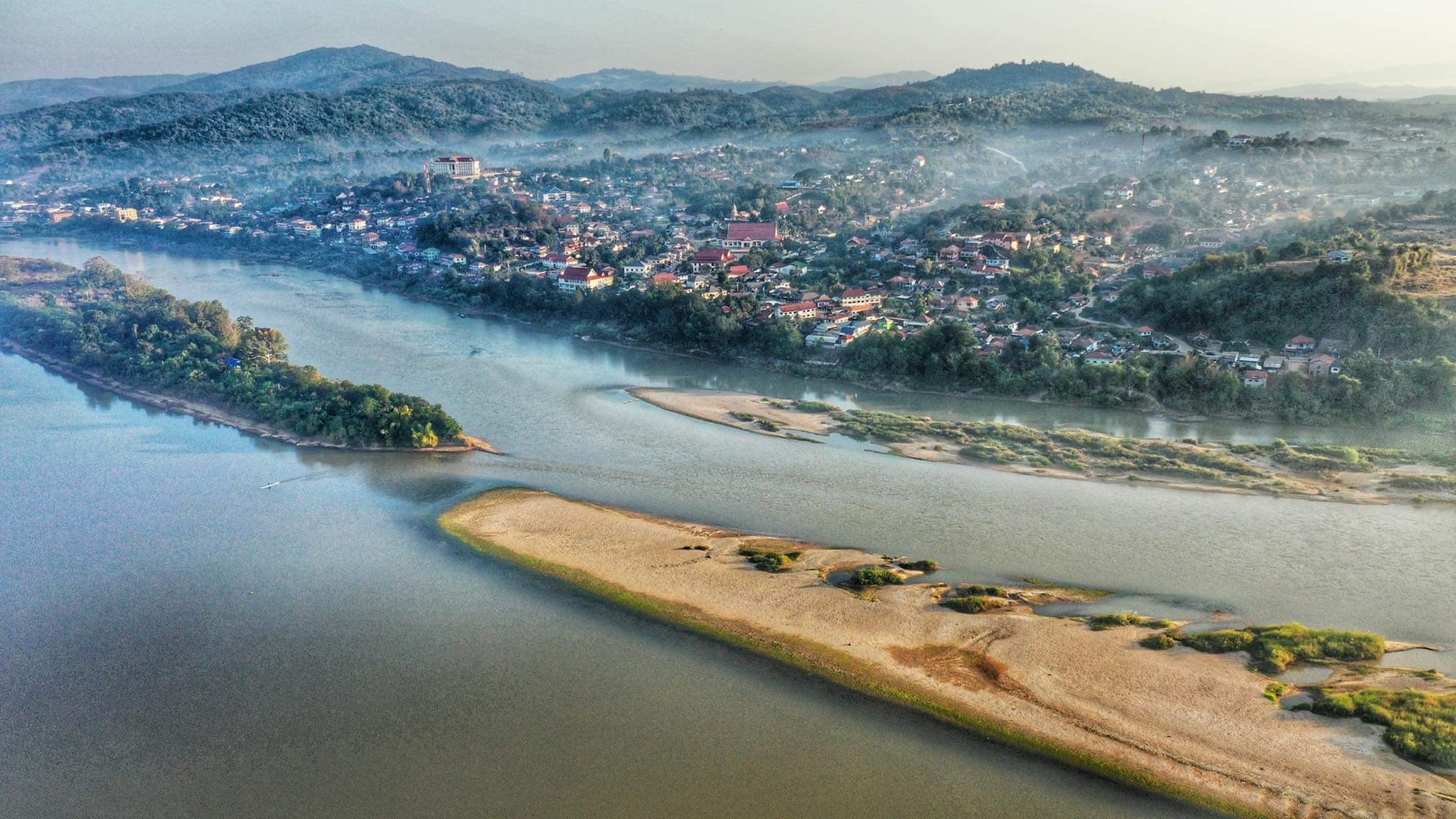By Pianporn Deetes and Gary Lee
As media attention focused on the dissolution of the parliament to prepare for the upcoming national election, news that a Power Purchase Agreement with Electricity Generating Authority of Thailand (EGAT) was signed for the Pak Lay dam slipped by without making much of a ripple. Gulf Energy, a Thai company which holds 40% equity in the Pak Lay Power Company, notified the Stock Exchange of Thailand (SET) of having signed the PPA on Monday 20 March.
The 770-Megawatt (MW) Pak Lay dam, which will be built on the Mekong mainstream in Laos – about 100 kilometres from the Thai-Lao border at Chiang Khan in Loei province, Northeast Thailand – is expected to start operations in 2032. Pak Lay dam is Gulf’s first hydropower project and will be developed in a joint venture with Sinohydro (Hong Kong) Holding Ltd, a subsidiary of Chinese state-owned enterprise, Power China, which holds the remaining 60% share in the project.
Gulf’s announcement followed shortly after EGAT confirmed in a letter, dated 9 March, to the Thai Mekong People’s Network, that the PPA for the Luang Prabang dam, was signed on 7 November 2022. CK Power PCL, which holds 50% stake in Luang Prabang Power Company, made no formal notification to the Stock Exchange of Thailand (SET) about the signing of the PPA. SET’s “Rules, Conditions and Procedures of Information Disclosure and Practices of Listed Company” require that a listed company immediately disclose to SET when it acquires or loses a significant contract. This would include PPAs, a key contract that confirms a buyer and enables a dam to be built, and which, in the case of Luang Prabang dam, will generate revenues for the company for 35 years.
The PPAs for the Pak Lay and Luang Prabang dams are being signed at a time when Thailand has excess electricity and Thai consumers are facing increasing electricity bills that compound cost of living pressures. Furthermore, the PPAs have been signed while the Thai Power Development Plan (PDP) is still being revised.
Thailand has a massive oversupply of electricity. According to EGAT’s website, the total installed capacity in 2022 was approximately 49,150 MW, while peak demand in April was approximately 32,250 MW. While some level of reserve margin is needed to manage disruptions and ensure a reliable supply of electricity, the 16,900 MW reserve equates to 34%, which is more than double the international norm of 15%. The 16,900MW reserve is more than seven times the combined installed capacity of Luang Prabang and Pak Lay. These two dams are simply not needed to secure Thailand’s electricity needs.
So why are these dams going ahead? Put simply, developers and operators of Pak Lay and Luang Prabang dams will benefit from a steady stream of revenue for the term of the PPAs – 29 and 35 years, respectively. These revenues are guaranteed by the inclusion of ‘take-or-pay’ clauses in the PPAs, that legally bind EGAT to pay for purchased electricity from the dams, even if it doesn’t use the electricity generated.
The cost of unused electricity are already being passed onto Thai consumers, who are facing higher fuel tariff (FT) charges and electricity bills. Just two days after Gulf’s announcement about signing the PPA for Pak Lay dam, the Energy Regulatory Commission (ERC) announced yet another increase in the fuel tariff charge, effective for May to August. Electricity prices are already at record-highs, following ERC’s decision in August last year to significantly increase the FT charge, increasing the average electricity price by 18% to 4.72 baht per unit.
Concerned at how poor planning and decision-making in the power sector are contributing to high electricity prices, the Thai Consumer Council, labour unions (including from EGAT) and NGOs, gathered outside the Ministry of Energy in Bangkok in December last year and submitted a letter, endorsed by more than 140 organisations, outlining five key demands to resolve high electricity prices. Among the key demands were to stop the approval of new power plants, including imports from large hydro in Laos; review the take-or-pay model in PPAs; and accelerate the support for decentralised energy options, including solar rooftops.
Thai business groups have also been calling for a reduction in electricity prices, highlighting its impacts on the cost of manufacturing and services at a time when many businesses are still recovering from the COVID-19 pandemic. Clearly, Thai citizens are getting a bad deal out of the Pak Lay and Luang Prabang dams. Reform of Thailand’s power sector is urgently needed to improve planning and decision-making. There is a need for greater transparency, oversight and accountability of the Power Development Plan, which has routinely overestimated demand and helped rationalise the construction of controversial power projects such as dams on the Mekong, over more sustainable and cheaper alternatives. There is a need to reign in the excessive reserve margin, which has high environmental, social and economic costs. Finally, there is a need to overhaul the take-or-pay model of Power Purchase Agreements, which benefits developers and operators of dams, while Thai consumers and the public are left to pick up the bill.

